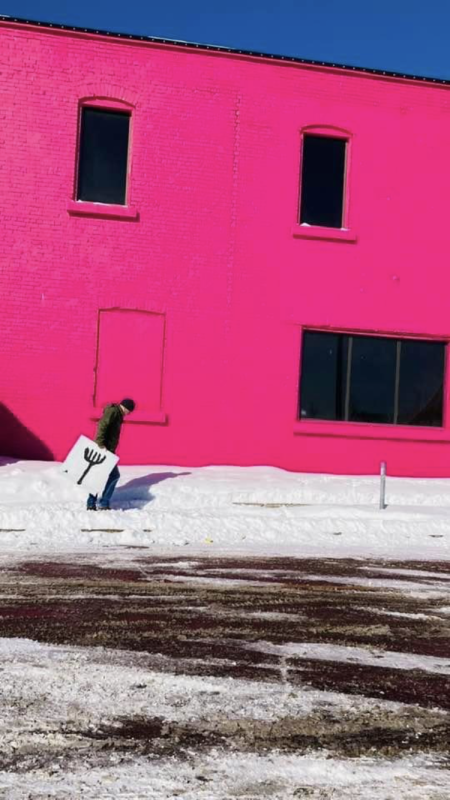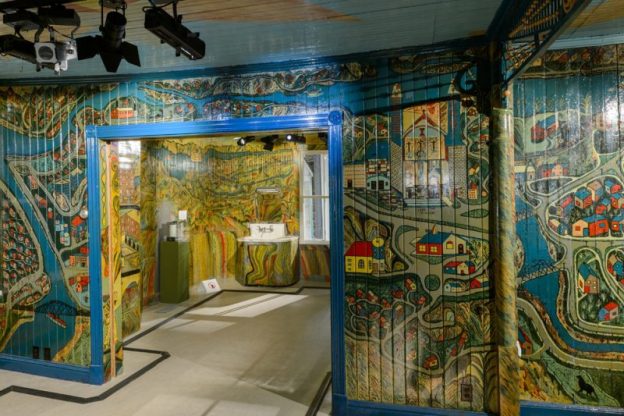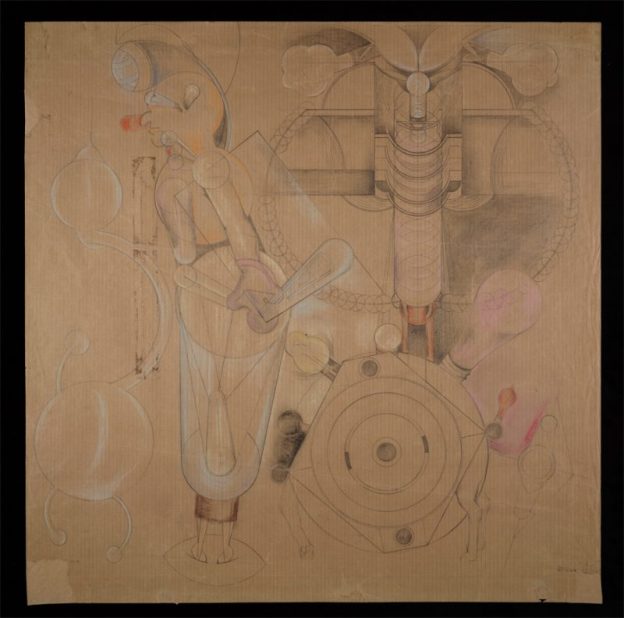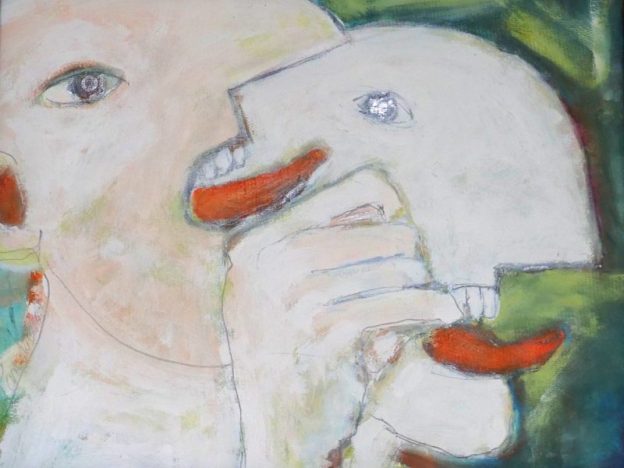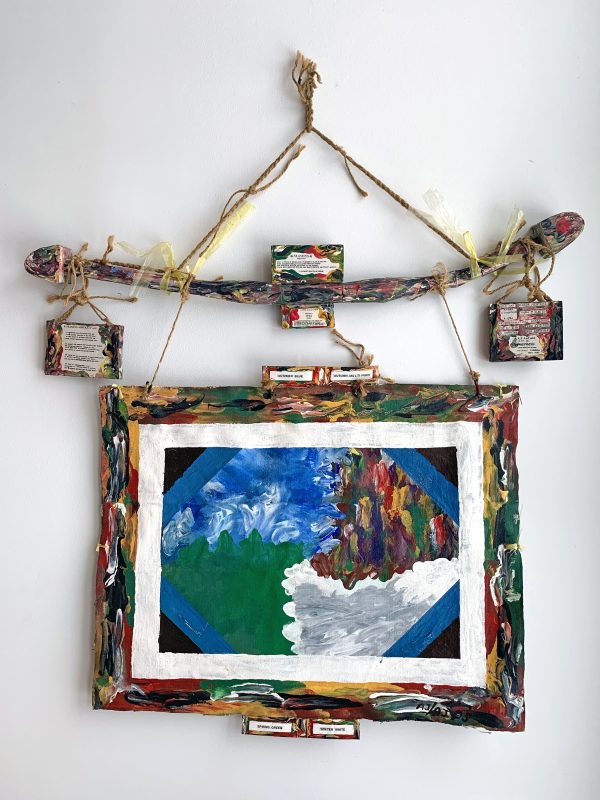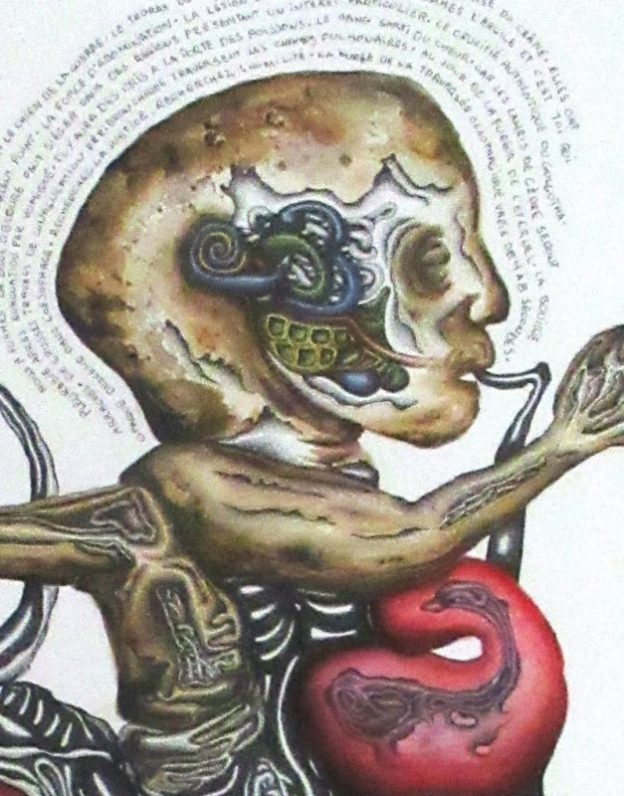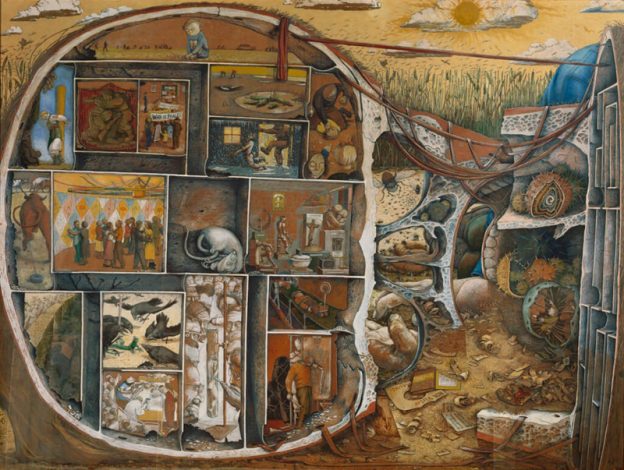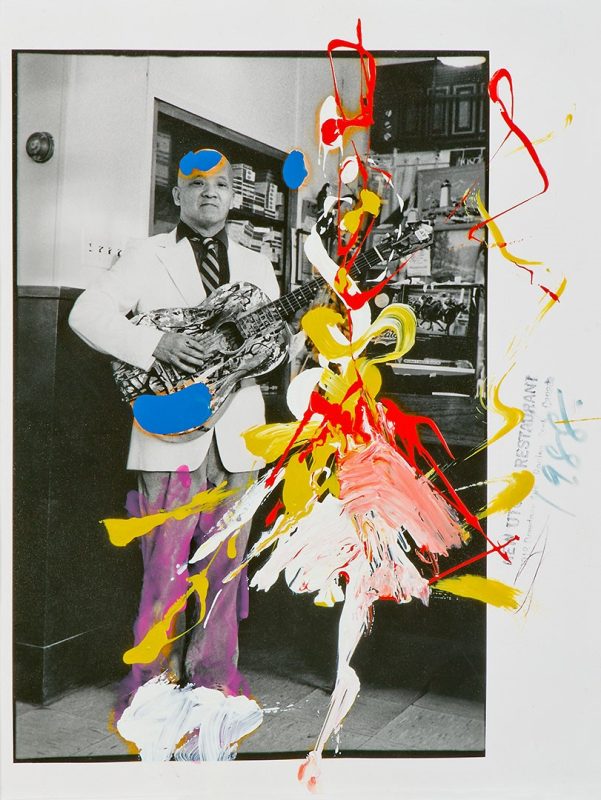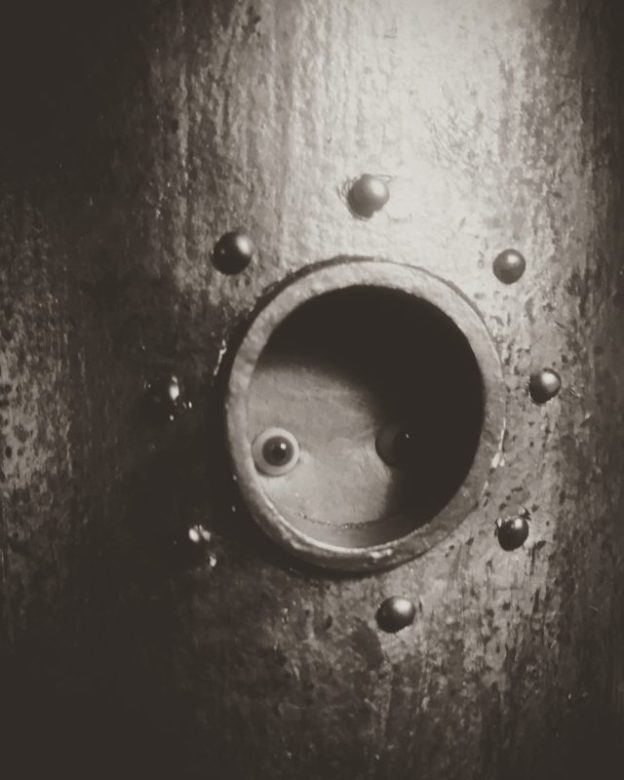(1966 — )
The Dodo Bird always wanted to be a commercial pilot. A high school teacher informed him that he would always be a flightless creature – a Dodo Bird – because of his failing grades. He proved the teacher wrong and has been a Bush pilot in Northern Ontario and the Arctic for the past 37 years. Teaching himself how to draw, paint, and sculpt in the remote regions of Canada, his drawings indicate the latitude and longitude where he has hidden carvings for curious explorers to find. You might find a Dodo Bird sticker in the strangest places: at the beach in Florida, a railing in Venice, on a street corner in Toronto. But…who is this guy? And what’s with the forks in his paintings?
